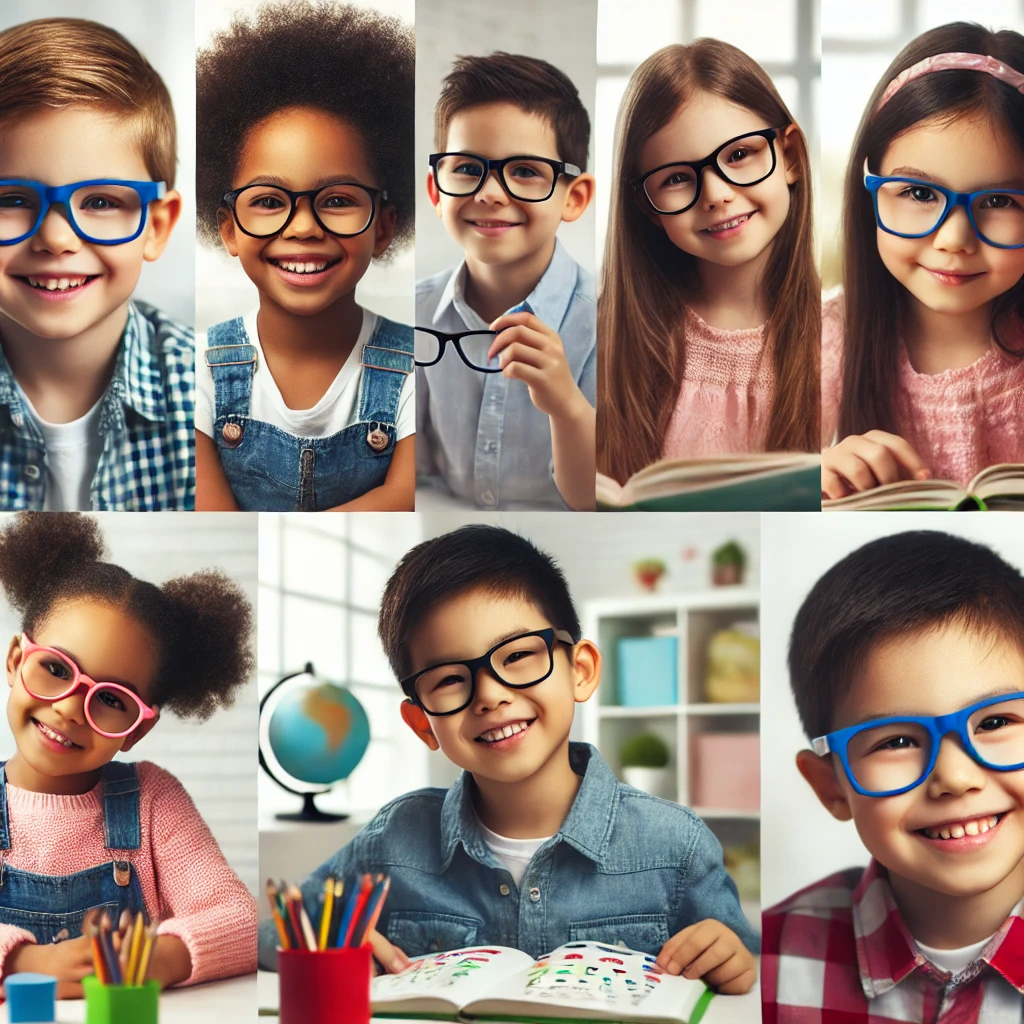
Pediatric Eye Exams: Nurturing Young Vision
Did you know that 80% of learning is visual? If your child struggles with seeing clearly, it can affect their ability to learn. Even infants explore and learn about the world through their eyes. Ensuring your child’s eyes are healthy and their vision is clear is crucial for their development.
When to Schedule Eye Exams for Kids The American Optometric Association (AOA) recommends eye exams at:
- 6 months
- 3 years
- The start of school
- Every 2 years thereafter
Children with risk factors such as developmental delays, premature birth, crossed or lazy eyes, family history of eye issues, or previous eye injuries may need more frequent exams. Kids who wear glasses or contact lenses should have yearly check-ups. Remember, children’s eyes change rapidly as they grow.
Infants: Birth – 24 Months A baby’s visual system gradually develops in the first few months of life. They learn to focus, move their eyes, and use them together as a team. This visual development lays the foundation for motor skills like crawling, walking, and hand-eye coordination.
Ensure your baby is hitting milestones by scheduling a comprehensive eye exam at 6 months. The eye doctor will check for proper vision development and look for conditions like strabismus (crossed eyes), farsightedness, nearsightedness, or astigmatism. Babies born prematurely or with developmental delays may need more frequent visits to monitor their progress.
Preschoolers: Ages 2-5 During the toddler and preschool years, children experience significant growth in intellectual and motor skills. Good vision is essential for developing fine motor skills, hand-eye coordination, and perceptual abilities, which prepare them for reading, writing, playing sports, and engaging in creative activities.
Watch for signs of lazy eye (amblyopia) or crossed eyes (strabismus). Early treatment is crucial for success. Be mindful of developmental delays related to object, number, or letter recognition, color recognition, or coordination, as these can often be rooted in visual issues. If your child frequently squints, rubs their eyes, sits very close to the TV, or avoids activities like puzzles or coloring, it’s time for an eye exam.
School-Aged Children: Ages 6-18 Undetected vision problems can impact your child’s academic, social, athletic, and personal life. Struggles in school or extracurricular activities might be due to vision issues. Proper learning and motor development depend on good vision and the ability of the eyes to work together. Issues with focusing, reading, eye coordination, or hand-eye coordination can lead to frustration and behavioral problems.
Signs of vision problems in older children include:
- Short attention span
- Headaches
- Frequent blinking
- Avoiding reading
- Tilting the head to one side
- Losing their place while reading
- Double vision
- Poor reading comprehension
What Happens During an Eye Exam? In addition to basic visual acuity tests (distance and near vision), an eye exam may assess:
- Binocular vision: How well the eyes work together
- Focusing ability
- Peripheral vision
- Color vision
- Hand-eye coordination
- Tracking
The doctor will also check for eye diseases or health conditions by examining the area around and inside the eye. Share any relevant personal history such as premature birth, developmental delays, family history of eye problems, eye injuries, or medications your child is taking.
If a vision problem is detected, the doctor might suggest options like eyeglasses, contact lenses, an eye patch, vision therapy, or Ortho-k, depending on the condition. Early diagnosis and treatment are key, as some conditions are easier to treat while the eyes are still developing.
By following the recommended eye exam schedule and staying alert to signs of vision problems, you can help your child reach their full potential.
